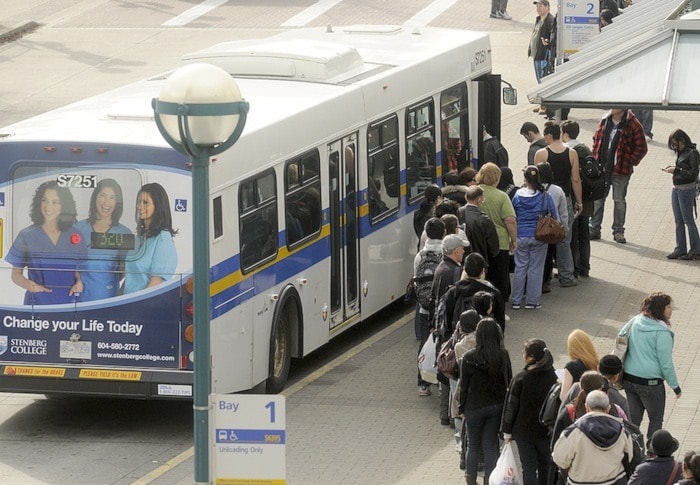Bus drivers hit their 'fare not paid' button to record fare evaders more than 2.7 million times in 2013 or about 10 per cent more than in 2011, according to TransLink statistics.
Many of the routes where bus fare evasion is most prevalent run through poor neighbourhoods, and the top five all go through Vancouver's Downtown Eastside.
"We are a community on wheels," TransLink CEO Ian Jarvis said, adding the buses serve many people at risk who sometimes board without paying.
"Yes, it's unfair that certain people don't pay. If they don't pay, that's theft. It's unfair to the riders who do pay and the taxpayers who subsidize the system."
But he argued there are circumstances such as passenger safety that justify exceptions.
"Think of a young teen trying to get home from Surrey Central to Langley or White Rock and they're 50 cents short and it's the last bus," Jarvis said. "I would let that teenager on board."
The latest numbers were released by the Canadian Taxpayers Federation's Jordan Bateman, who argues fare evasion is a chronic and growing problem and another reason for voters to reject a proposed 0.5 per cent sales tax for transit expansion.
Asked if it's reasonable to expect every passenger down to the poorest to pay each time they ride a bus, Bateman said there may be exceptions but people using the service should expect to pay for it.
"It amuses me that they suggest this is somehow anti-poor when a sales tax without rebates is a regressive tax that hurts the poor more than anybody else," Bateman said.
The 2.76 million button presses equate to 1.1 per cent of the 249 million riders carried on buses each year, and would be worth $6.9 million in extra revenue if each of those free riders paid a $2.50 cash fare.
But Bateman contends real fare evasion levels are higher – worth more than $18 million a year when SkyTrain is included.
"We know drivers don't press the button every time," Bateman said. "And we know drivers with a big backlog of people boarding will sometimes cover the farebox."
Jarvis said audits indicate fare evasion consistently runs at about 4.8 per cent system-wide.
Transportation observer Stephen Rees said it's impossible to ensure every passenger pays and most transit systems in the world aim to capture most, not all.
He said the money lost to fare evasion is a tiny fraction of the $250 million in new annual revenue that's critically needed to expand the system.
"If everybody paid their fares we would still be in deep doo-doo," Rees said.
Nathan Woods, president of the bus drivers' union, said drivers don't confront passengers who don't pay because driver assaults can result.
He said drivers have tried to be vigilant about pressing the fare not paid button to help transit security find fare cheats who may also be a threat to drivers.
He said drivers encounter fare evaders everywhere.
"It's all walks of life, not just the poor neighbourhoods," Woods said. "People can walk on with a $7 Starbucks coffee and walk by saying they can't afford to pay."
Woods said many of the passengers recorded as unpaid may actually have a monthly pass or U-Pass but didn't bother pulling it out to show the driver.
"If they don't show it, we're going to tag the button," Woods said. "We're not going to say 'Buddy do you want to come back and show me that' because that can lead to confrontation."
He said drivers also push the button when drivers pay some but not enough cash, or if they pay too much.
Shields up
Bus drivers will soon start testing new plastic shields designed to protect them from assaults.
The six-month trial period is being overseen by WorkSafeBC and is expected to begin in late January, Woods said.
"There's still some concern about some ergonomic issues – ventilation and glare – but by and large we're looking at it as a positive," he said.
After the test period, the shields may be redesigned further based on feedback from drivers and passengers.
A total of 134 bus drivers were assaulted on the job last year.
